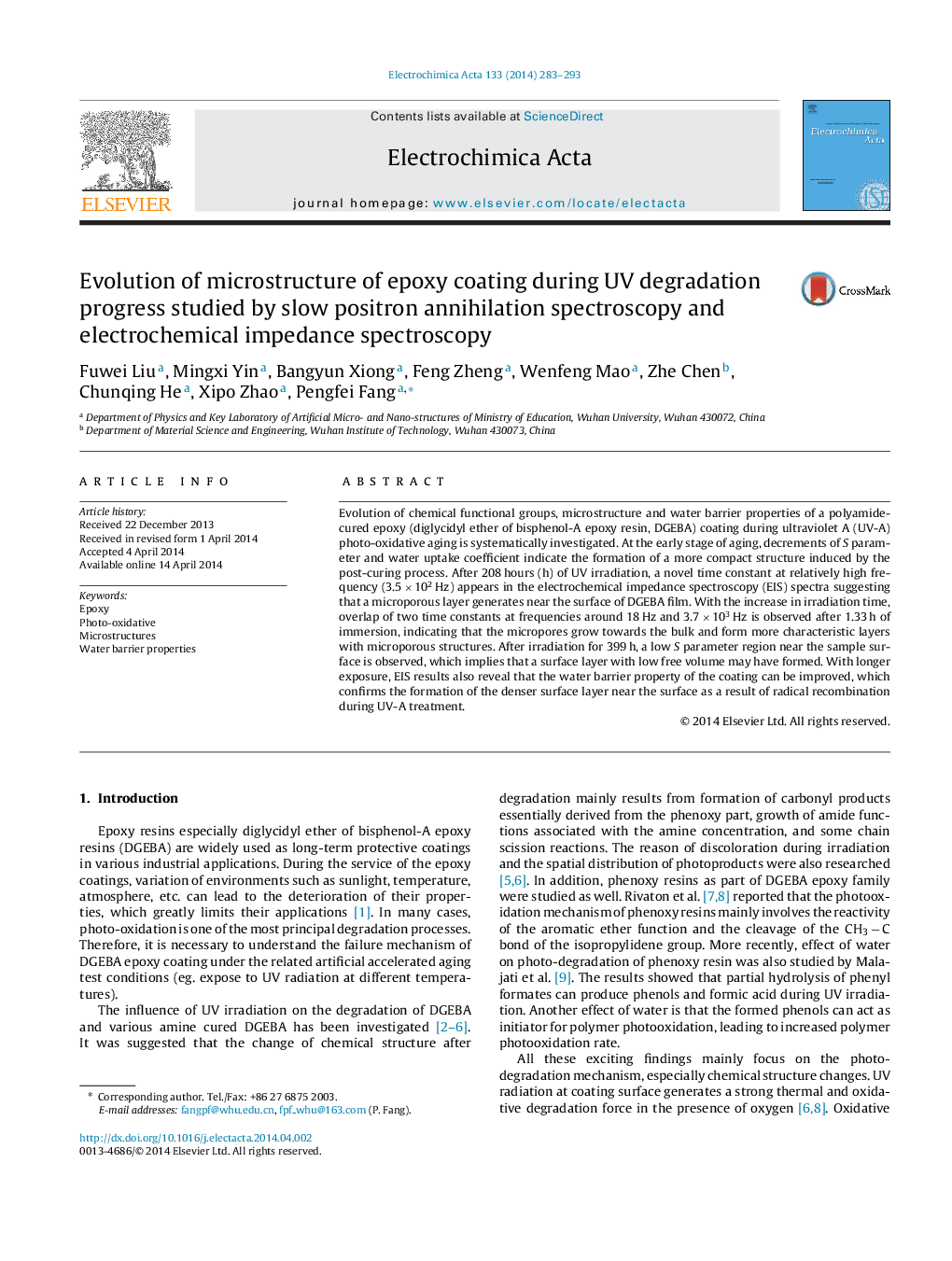| Article ID | Journal | Published Year | Pages | File Type |
|---|---|---|---|---|
| 185488 | Electrochimica Acta | 2014 | 11 Pages |
•Decrements in S value and water uptake coefficient confirm the post-cure process.•Molecular chain scission leads to the formation of microporous structure.•The formation of an aged layer with high density is verified by EIS.
Evolution of chemical functional groups, microstructure and water barrier properties of a polyamide-cured epoxy (diglycidyl ether of bisphenol-A epoxy resin, DGEBA) coating during ultraviolet A (UV-A) photo-oxidative aging is systematically investigated. At the early stage of aging, decrements of S parameter and water uptake coefficient indicate the formation of a more compact structure induced by the post-curing process. After 208 hours (h) of UV irradiation, a novel time constant at relatively high frequency (3.5 × 102 Hz) appears in the electrochemical impedance spectroscopy (EIS) spectra suggesting that a microporous layer generates near the surface of DGEBA film. With the increase in irradiation time, overlap of two time constants at frequencies around 18 Hz and 3.7 × 103 Hz is observed after 1.33 h of immersion, indicating that the micropores grow towards the bulk and form more characteristic layers with microporous structures. After irradiation for 399 h, a low S parameter region near the sample surface is observed, which implies that a surface layer with low free volume may have formed. With longer exposure, EIS results also reveal that the water barrier property of the coating can be improved, which confirms the formation of the denser surface layer near the surface as a result of radical recombination during UV-A treatment.
Graphical abstractFigure optionsDownload full-size imageDownload as PowerPoint slide
